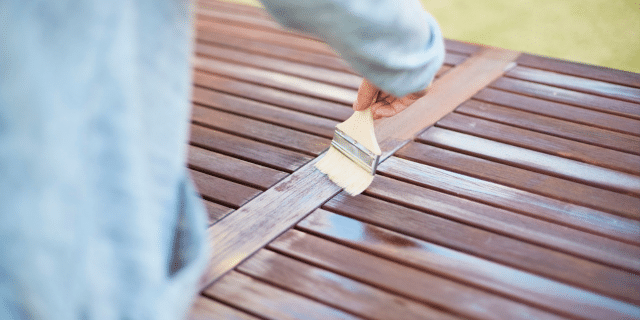
by California Casualty | Firefighters, Health, Helpful Tips |
When the alarm sounds, you spring into action—no time to think about snacks or sugar crashes. That’s why what happens in the kitchen is just as important as what happens on a call. At the firehouse, mealtime is more than fuel—it’s tradition, teamwork, and a chance to swap out greasy comfort food for healthy hero meals that keep the crew strong, sharp, and ready for anything.
We focused on meals that can handle the unpredictability of a shift. They are easy to prep in bulk, hold up well if interrupted mid-cook, and reheat like a champ. Here are some simple, satisfying ways to level up your firehouse fare.
Big Batch Chili
https://lovinghomeschool.com/big-batch-homemade-chili/
A firehouse favorite, this yields about 10½ quarts. It’s also easy to freeze. Cooking the meat ahead of time makes this easy to assemble.
Ingredients
- 2 pounds ground beef cooked in onion* (for a healthier version, use ground turkey or chicken)
- 1 cup green peppers, chopped
- 3 16-ounce cans kidney beans
- 3 15-ounce cans of great northern beans
- 2 28-ounce cans of diced tomatoes
- 2 2-ounce cans of tomato sauce
- 4 Tablespoons chili powder
- 2 tsp. pepper
- 4 tsp. salt
- 2 tsp. garlic powder
*Sprinkle about 2 Tbsp. dried minced onion over each pound of meat when you put it in the pan. Alternately, you can add ½ cup of raw, chopped onion.
Instructions
- Cook and drain ground beef.
- Rinse and drain beans.
- Add all ingredients to large pot.
- Stir together and bring to boil.
- Reduce heat and simmer gently 60 minutes or more.
- Serve with rice and shredded cheddar cheese.
Protein Pancakes
https://www.womenshealthmag.com/food/a64595865/high-protein-pancake-recipe/
Made with oat flour and protein powder rather than the traditional white flour, this recipe keeps you fuller longer. Size it up for your crew.
Ingredients
- 1/3 cup oat flour
- 1/4 cup unflavored whey protein powder
- 1 baking powder
- 1/4 ground cinnamon
- Kosher salt
- 1 small ripe banana
- 1/2 cup low-fat cottage cheese
- 1 large egg
- 1/2 pure vanilla extract
- Maple syrup and fresh berries, for serving
Instructions
- In medium bowl, whisk oat flour, protein powder, baking powder, cinnamon, and a pinch of salt.
- In another medium bowl, mash banana with a fork. Whisk in cottage cheese, egg, and vanilla to combine. Gradually add wet ingredients to dry ingredients, whisking just until combined. Let batter rest 5 minutes.
- Heat large nonstick skillet on medium. Add four scant 1/4-cupfuls of batter and flatten into 3½ to 4-inch rounds using side or bottom of measuring cup. Cook until edges are set and bottom is golden brown, 2 to 3 minutes. Flip and cook until golden brown and cooked through, 1 to 2 minutes more. Transfer to plate.
- Reduce heat to medium-low. Repeat with remaining batter adjusting heat as necessary. Serve pancakes with maple syrup and berries if desired.
Rice with Black Beans and Sausage
https://foodhero.org/recipes/rice-black-beans-and-sausage
This comforting and flavorful dish is quick and easy to prepare. Size it up for your crew.
Ingredients
- 2 tsp. vegetable oil
- 8 ounces low-fat polish kielbasa sausage, cut into small pieces
- 1 large onion, chopped
- 1 clove garlic, minced or ¼ teaspoon garlic powder
- 1 red bell pepper, chopped
- 1 tsp. ground cumin
- 1 cup uncooked white rice (try brown rice for a nutritional boost)
- 1 can (15 ounces) black beans, drained and rinsed
- 2 cups water
Directions
- Rinse or scrub fresh vegetables under running water before preparing.
- Heat oil over medium-high heat (350 degrees F in an electric skillet); cook sausage and onion until onion is clear.
- Add remaining ingredients.
- Bring to boil over high heat, then reduce heat to low. Cover the skillet and simmer for 20 minutes. (Adjust cooking time for brown rice as needed.)
- Refrigerate leftovers within 2 hours.
Six-Can Chicken Tortilla Soup
https://www.allrecipes.com/recipe/19766/six-can-chicken-tortilla-soup/
This could be the easiest soup ever. Just open cans and combine. The following recipe makes 12 portions, so size it up as needed for your crew.
Ingredients
- 4 14.5-ounce cans chicken broth
- 2 15-ounce can whole kernel corn, drained
- 2 15-ounce can black beans
- 2 10-ounce can chunk chicken
- 2 10-ounce can diced tomatoes with green Chile peppers, drained
- crushed tortilla chips (optional)
- shredded Cheddar cheese (optional)
Instructions
- Pour chicken broth, corn, black beans, chunk chicken, and diced tomatoes with green chilies into a large saucepan or stockpot over medium heat.
- Simmer, stirring occasionally, until chicken is heated through, about 15 minutes.
- Serve hot, topped with tortilla chips and grated cheese.
Slow-Cooker BBQ Pulled Chicken
https://cooking.nytimes.com/recipes/1025356-slow-cooker-bbq-pulled-chicken?register=google&auth=register-google
Enjoy the fragrant smells of cooking all day long in anticipation of this delicious dish. This recipe makes 8 servings. Size it up as needed for your crew and your crockpot.
Ingredients
- 1½ cups tomato-based barbecue sauce (homemade or store-bought)
- 1 to 2 chipotle chiles in adobo (depending on heat tolerance), plus 2 tablespoons adobo sauce
- 2 tablespoons Worcestershire or soy sauce
- 1½ teaspoons onion powder
- 1½ to 2 pounds boneless, skinless chicken thighs
- 1½ to 2 pounds boneless, skinless chicken breasts
- Salt and black pepper
Instructions
- In a 5- to 8-quart slow cooker, stir together 1 cup barbecue sauce, chipotle chiles, adobo sauce, Worcestershire sauce and onion powder. Add the chicken, season with salt and pepper, and toss to coat. Cover and cook on low until the chicken shreds easily when pulled with a fork, 3 to 5 hours.
- Working right in the slow cooker, use two forks to shred the meat into large, bite-size pieces. Stir in the remaining ½ cup barbecue sauce and season to taste with salt and pepper.
At California Casualty, we’re proud to serve firefighters—the everyday heroes who put others first. We know that what’s on the plate can make a big difference at the station. Do you have a go-to firehouse recipe or a healthy twist on a classic? Share it in the comments—we’d love to hear what’s fueling your crew!
This article is furnished by California Casualty, providing auto and home insurance to educators, law enforcement officers, firefighters, and nurses. Get a quote at 1.866.704.8614 or www.calcas.com.

by California Casualty | Helpful Tips, Homeowners Insurance Info |
Ready to roll up your sleeves and boost your home’s value without breaking the bank? Whether you’re prepping to sell or just want to make your space shine, the right DIY projects can deliver big returns—and serious satisfaction. From weekend upgrades to clever curb appeal tricks, we’re diving into easy, affordable ways to make your home more appealing to buyers and more enjoyable for you. Let’s get started—toolbox optional, enthusiasm required!
Freshen Up with Paint and Wallpaper
Paint is one of the most cost-effective ways to transform your home. And it doesn’t stop at the walls! Try painting your kitchen island a bold color or adding contrast by painting trim, molding, or millwork. Pair soft white walls with a neutral island and colorful trim to let the details shine.
Give your front door a splash of color to boost curb appeal instantly. Or refresh dated kitchen cabinets with a coat of paint or stain. Peel-and-stick wallpaper is a great way to add personality with minimal effort—try it on an accent wall or even as a unique backsplash.
Upgrade Fixtures for a Stylish Finish
Swapping out outdated fixtures can give your home a modern edge—and lighting especially can make a difference. Start with the bathroom: replace an old faucet and old vanity lighting with something more stylish.
In the kitchen, replace your faucet. Convert recessed lights to pendant lights for an instant design upgrade—hardware store kits make it easy. Throughout your home, switch out builder-grade light fixtures for ones that reflect your personal style, and don’t overlook the details: new metal switch plates can add a surprising dose of polish.
Add Charm with Décor Details
Sometimes it’s the little touches that make the biggest impact. Display beautiful cookware on brass racks to elevate your kitchen’s look and free up cabinet space. Swap out cabinet hardware for on-trend pulls—just be sure to match existing holes for easy installation (tip: bring an old one with you when you shop!).
Hang curtains using tension rods and clip-on rings for a no-drill window treatment. Brighten glass-front cabinets with colorful self-adhesive shelf liners. Mirrors placed strategically can make rooms feel larger and filled with natural light.
Refresh Furnishings and Layouts
Furniture can work double-duty when it’s thoughtfully chosen. Consider recovering worn chairs or swapping out bar stools for a more modern look. Create a cozy breakfast nook with a slim table, a few chairs, and a bench—bonus points if it includes hidden storage.
Speaking of storage, look for pieces that offer built-in compartments or shelves to reduce clutter. Want to add buyer appeal? Carve out a home office space. Even a walk-in closet or pantry can be transformed into a compact yet functional workspace.
Enhance Floors Underfoot
Flooring can make or break a first impression. If you have hardwood, refinishing it can dramatically boost your home’s value. Want a simpler update? Add a carpet runner in the entryway or kitchen to define the space and add comfort where you stand most.
Bathroom flooring is a great place to try a DIY upgrade—it’s typically a smaller area and a neutral finish goes a long way in appealing to future buyers.
First impressions matter, and your home’s exterior sets the tone. A good power wash can do wonders—and if that’s not enough, consider painting the siding, trim, or shutters for a clean, fresh look. Don’t forget the gutters—cleaning them is a small job that makes a big difference.
Tidy up your landscaping by trimming overgrowth and patching bald spots in the lawn. Add perennials along walkways or in front of the house for low-maintenance greenery that returns year after year. If you have pets, make sure it’s pet-friendly. Repair and refresh your deck to keep it looking its best. Declutter your garage and consider some easy garage updates.
Want a quick style boost? Update your mailbox or address numbers for a simple but noticeable refresh.
Considering bigger home renovations? See our blogs on DIY versus going pro and how to avoid contractor scams.
Your home is likely one of your greatest investments—protect it and help it shine with projects that add value and personality. And don’t forget, the right insurance coverage is just as important.
This article is furnished by California Casualty, providing auto and home insurance to educators, law enforcement officers, firefighters, and nurses. Get a quote at 1.866.704.8614 or www.calcas.com.

by California Casualty | Helpful Tips, Homeowners Insurance Info |
There’s nothing like sipping a cold drink on your backyard deck, soaking up the sunshine or hosting a summer barbecue with friends. But before you roll out the grill and string up the lights, it’s time to show your deck a little love. Whether it’s blazing sun, pouring rain, heavy snow, or constant foot traffic, your deck weathers it all—and proper maintenance is the key to keeping it safe, sturdy, and looking its best. Ready to give your deck the TLC it deserves? Let’s dive in!
Know Your Type of Deck
Before you start, it’s important to know what kind of deck you have. Different materials require different levels of care.
- Wood Decks: These are traditional and beautiful but need the most maintenance. Hardwoods like cedar, redwood, and teak are more durable than softwoods like pine and fir.
- Composite Decks: Made from wood fibers and plastic, these are lower-maintenance and usually come with UV protection built in. However, they still require periodic cleaning and inspection.
Summer Deck Maintenance
Now is the perfect time to inspect, clean, and reseal your deck as part of summer home maintenance. Here’s your seasonal to-do list:
1. Inspect and Repair
Your first step should be a thorough inspection:
- Check for damage such as cracked, warped, or splintering boards.
- Look for discoloration, rot, and peeling. Soft, spongy areas or visible decay could mean the wood is rotting.
- Inspect fasteners. Tighten loose screws and replace any that are rusty.
- Examine the flashing—the water barrier where your deck attaches to the house. Damaged or missing flashing can lead to major water issues.
- Ensure that stairs and handrails are stable and secure.
Warning signs your deck may need replacing:
- Severe rot or decay
- Multiple loose or broken boards
- Deep discoloration or widespread splintering
- Rusty or failing hardware
Make minor repairs now to prevent costly fixes later.
2. Clean Your Deck the Right Way
Before you clean, protect nearby plants by covering them with a breathable tarp. Many deck cleaning products contain chemicals that can harm vegetation.
- Remove all furniture, plants, and décor.
- Sweep off leaves, dirt, and debris.
- Spray down the deck with a garden hose using a strong stream.
- Apply a wood-safe cleaner or a composite-safe cleaner according to the product instructions. You can also use warm soapy water.
- Scrub using a stiff-bristled brush.
- Rinse thoroughly and let dry completely before applying any sealant or stain.
Pro Tip: Avoid using chlorine bleach—it can damage wood and composite decks. For stubborn stains on a wood deck, make a paste of baking soda and water, apply it to the stain, let it sit, then scrub and rinse. For composite decks, try a composite-safe cleaner.
Power washing caution: You can power wash occasionally, but not every year. Used incorrectly, a pressure washer can gouge wood and composite decks, and cause more harm than good. When in doubt, a hose with a hard spray setting often does the trick.
3. Seal and Stain (for Wood Decks)
Sealing and staining are critical to protect your wood deck from sun, moisture, and wear. (Composite decks do not need to be stained or sealed.)
- Frequency: Seal every 1–2 years, depending on the product and your climate.
- Timing: Make sure your deck is clean and completely dry. Sand any splintered or rough areas before you begin.
- Product selection:
- Choose a UV-protective stain that complements your home’s exterior.
- Use a clear or semi-transparent sealant with strong water resistance.
- Avoid paint—while it may look good initially, it tends to crack, peel, and deteriorate quickly on deck surfaces.
- Application tips:
- Follow the wood grain to prevent streaks.
- Use a brush, roller, or sprayer to apply an even coat.
- Apply in the early morning or late afternoon to avoid direct sun, which can cause uneven drying.
4. Deck-Safe Furnishings and Accessories
Your furniture and décor choices can impact your deck’s longevity.
- Skip natural fiber rugs (like jute or bamboo). These absorb moisture and promote mildew. Opt for synthetic, quick-drying outdoor rugs instead.
- Protect your deck from grill heat. Place grills on a nonflammable grill pad or mat to prevent grease stains and fire risks. Practice grill safety.
- Use furniture with rubber or plastic feet to prevent scratching or gouging the surface.
Year-Round Deck Care Tips
While summer is deck maintenance season, a few habits year-round can help preserve your investment:
- Sweep regularly to prevent leaves and debris buildup, which can cause staining and mildew.
- Shovel snow carefully in winter using a plastic shovel and always with the grain of the boards.
- Trim nearby trees and bushes to reduce moisture buildup and leaf litter.
Your deck is an extension of your home—and like any living space, it deserves care and attention. By inspecting it annually, cleaning it regularly, and sealing it as needed, you can enjoy a beautiful, safe, and functional outdoor retreat for years to come.
This article is furnished by California Casualty, providing auto and home insurance to educators, law enforcement officers, firefighters, and nurses. Get a quote at 1.866.704.8614 or www.calcas.com.

by California Casualty | Helpful Tips, Homeowners Insurance Info |
Is your backyard begging for a summer glow-up? Whether you’re dreaming of sunset dinners under twinkle lights, weekend BBQs with friends, or just a quiet oasis to sip your morning coffee, now’s the perfect time to turn that outdoor space into your personal slice of paradise. As you spruce things up, don’t forget the essentials—like safe grilling practices, checking your deck for wear and tear, and making sure your outdoor setup is as secure as it is stylish. A little planning now means more peace of mind—and more time to kick back and enjoy summer under the sun.
Refresh Your Patio or Deck
Your patio or deck sets the stage for everything from quiet mornings to lively get-togethers. Start by giving it a thorough clean:
- Sweep away debris. Use a broom or blower to clear leaves and dirt.
- Wash the surface. A gentle cleanser and stiff brush work well on most patio materials. For concrete, brick, or stone, consider renting a commercial-grade power washer. Avoid power washing stained wood—it could strip the finish.
- Inspect and repair. Check for loose boards, protruding nails, or splintered surfaces. Make necessary repairs before the space gets regular use.
Clean and Style Outdoor Furniture
Outdoor furniture can take a beating over the seasons. Give it some love:
- Clean according to material. A hose and mild dish soap work well for plastic and metal furniture. For wood or wicker, use a damp cloth to avoid water damage.
- Dry thoroughly. Use old towels to prevent water spots and prolong the life of your pieces.
Once clean, it’s time to rethink your layout and decor.
Envision How You’ll Use the Space
Think about how your outdoor area will serve you this summer. Will it be:
- A dining spot? Add or update a table and chairs for al fresco meals.
- A game zone? Leave room for yard games and flexible seating.
- A cozy retreat? Set up a hammock, reading nook, or fire pit lounge.
Consider lightweight furniture that can be easily rearranged depending on the occasion. And remember—comfort is key. Add cushions, throws, and cozy seating to encourage lingering.
Streamline and Elevate with Smart Decor
Keep clutter in check by choosing multi-purpose pieces, like:
- Benches with storage or outdoor storage bins. Great for stashing games, cushions, or grilling supplies.
- Plants and greenery. Choose pet-safe plants for your own fur babies or visiting ones.
- Vertical accents. Use walls or fences to hang lanterns, shelves, or planters—leaving more ground space open.
- Add personality with pops of color—pillows, cushions or a bold outdoor rug can instantly refresh the vibe.
Shade and Light: Must-Haves for Comfort and Style
Don’t forget about two key ingredients to outdoor enjoyment: shade and lighting.
- Shade solutions: Umbrellas, pergolas, or canopies offer protection during peak sun hours.
- Lighting layers: String lights bring magical ambiance. Solar-powered fairy lights, path markers, and outdoor pendant fixtures add both safety and charm.
Fire Pits & Grilling: Safety First, Fun Always
Fire Pit Safety: A fire pit is the ultimate backyard upgrade, but it must be used safely.
- Keep it at least 10 feet from your house or flammable materials.
- Burn only untreated, dry wood.
- Never use accelerants like lighter fluid to start or relight the fire.
- Use a fire screen to catch sparks.
- Keep a fire extinguisher, hose, or bucket of water nearby.
Grill Safety: Summer barbecues are a beloved tradition—but don’t forget basic safety.
- Clean your grill before the first use to prevent flareups.
- Check propane connections and ensure the tank is full.
- Keep the grill away from structures and flammable materials.
- Store propane and charcoal safely.
- Supervise children and pets around the grill.
Grilling Pro Tips:
- Bar cart transformation: Repurpose a bar cart as a mobile grilling station. Load it with spices, utensils, and condiments.
- DIY condiment carrier: Give those cardboard six-pack beer caddies new life as a picnic-friendly condiment holder. Wrap it in contact paper for a stylish touch.
Don’t Forget Bug Control
Nothing ruins a backyard vibe faster than a buggy swarm. Take steps to protect your space:
- Remove standing water. Check flowerpots, gutters, and birdbaths regularly.
- Use citronella candles or torches. These can help deter bugs while adding ambiance.
- Consider natural repellents. Lavender, rosemary, and marigolds are mosquito-resistant and look great in planters.
- For added peace of mind, you can install a screened canopy or consider a misting system for high-traffic areas.
Your outdoor space should be an extension of your home—a place to relax, connect, and create lasting summer memories. With a little effort and intentional design, you can transform your backyard into a functional and fabulous retreat.
Pro tip: Take a few photos now, then again at the end of summer. You’ll love seeing how your outdoor makeover paid off.
Finally, make sure you’re insured for summer fun, and protect your home and property with the right insurance for added peace of mind. Here’s to your best backyard summer yet!
This article is furnished by California Casualty, providing auto and home insurance to educators, law enforcement officers, firefighters, and nurses. Get a quote at 1.866.704.8614 or www.calcas.com.

by California Casualty | Auto Insurance Info |
You take pride in your car’s appearance—shiny, clean, and polished to perfection. But even the most careful car owner can fall victim to everyday threats that silently sabotage that showroom sparkle. From spilled coffee to sunbaked bird droppings, the dangers are everywhere. Here’s what to watch out for—and how to fight back.
1. Parking Under Trees
Shady spots might seem like a great way to beat the heat, but trees come with risks. Sticky sap, falling branches and twigs, and even acorns can wreak havoc on your paint. Sap is especially stubborn—it bonds with the surface and can damage the finish over time. Use a bug and tar remover from your local auto store to gently lift it off.
2. Bird Droppings
Think of bird droppings as acid bombs for your paint job. They harden in the sun and can etch into your car’s finish if left too long. Wipe them off with a wet microfiber cloth using a gentle lifting motion (don’t scrub!). You can let the cleaner sit for a few minutes if needed to soften hardened spots.
3. Bug Splatter
Bugs on the windshield are just an annoyance. But bugs on your paint? That’s a problem. Many insects contain acidic compounds that can damage your finish. Clean them off ASAP with a dedicated bug remover or mild soap and water.
4. Fuel Spills
Fuel stains are more than ugly—they’re damaging. Gasoline can eat away at your paint and leave behind stubborn marks. Avoid topping off the tank to help prevent the chance of spills. If there’s a spill, clean it up immediately. Pro tip: Older brake fluid is also a known paint-stripper, so be extra careful when topping off your fluids.
5. Road Salt
Winter driving means road salt—and that means potential rust. Salt can corrode your car’s underbody and eat away at the paint if left unwashed. Rinse your car regularly in the winter and consider a protective wax coat before the first snowfall. Coastal drivers, take note: salty ocean air can do the same.
6. Writing in the Dust
We get it—drawing “Wash Me” on a dusty car is tempting. But those dust particles? They’re basically sandpaper. Dragging them across the surface can create micro-scratches. Dust mixed with rainwater can also become acidic, further damaging your finish. When you see dust, that’s a great time to run your vehicle through a car wash.
7. Dirty Sponges & Harsh Car Washes
Washing your car with a dirty sponge just grinds more grime into the paint. Stick to clean microfiber cloths, and avoid old-style brush car washes, which can leave swirl marks. Soft-cloth or touchless car washes are safer choices.
8. Coffee and Soda Spills
Placing your cup on the roof while fumbling for keys? We’ve all done it. But if you spill sugary or acidic drinks, they can stain your paint fast. Wipe off any spills immediately, especially soda and coffee.
9. Silly String & Shaving Cream Pranks
They might seem harmless, but Silly String contains resins and dyes that can bond to your paint, and shaving cream can leave behind lasting stains. If your car becomes the victim of a prank, rinse and wash it thoroughly as soon as possible.
10. Sprinkler Water Spots
Those white spots you see after a sprinkler hits your car? That’s mineral buildup from hard water, and over time, it can wear away your clear coat. Always dry your car with a microfiber towel—don’t let it drip dry.
Protect Your Paint Like a Pro
You can take steps year-round to protect your paint, and help it last longer.
- Park in a garage or covered area whenever possible.
- Wash your car regularly, especially after road trips or storms.
- Dry it completely with a microfiber towel to avoid water spots.
- Remove bird droppings, sap, and bugs as soon as you spot them.
- Wax your car every 3 to 6 months to maintain a protective barrier.
Your car is one of your biggest investments. Protect it with the right insurance for added peace of mind.
This article is furnished by California Casualty, providing auto and home insurance to educators, law enforcement officers, firefighters, and nurses. Get a quote at 1.866.704.8614 or www.calcas.com.





